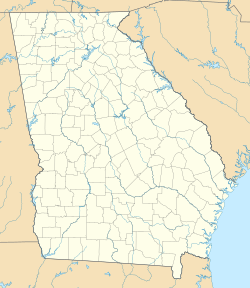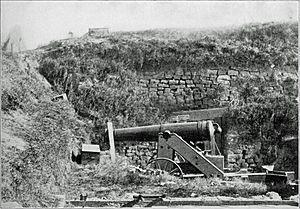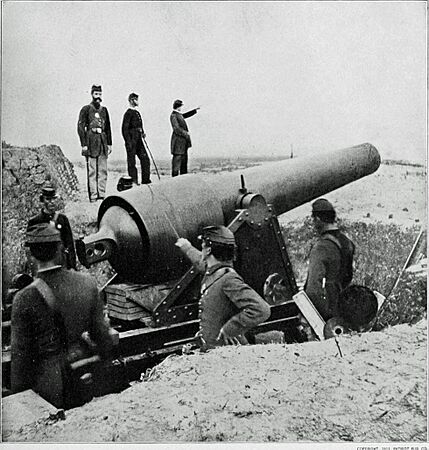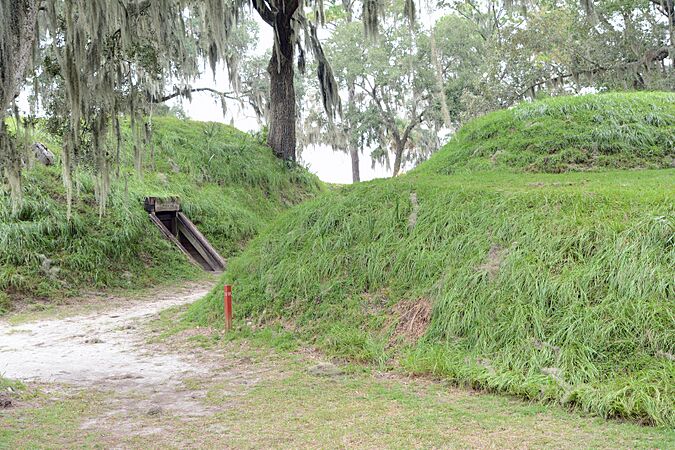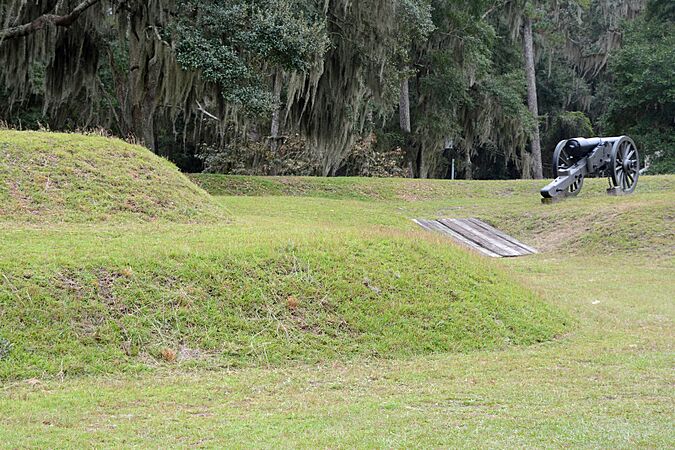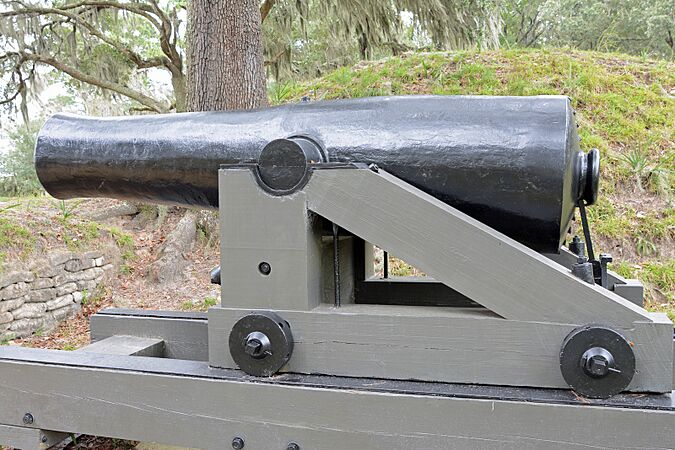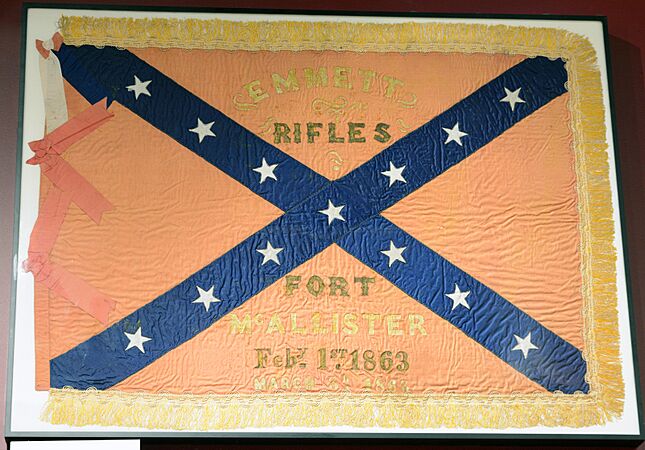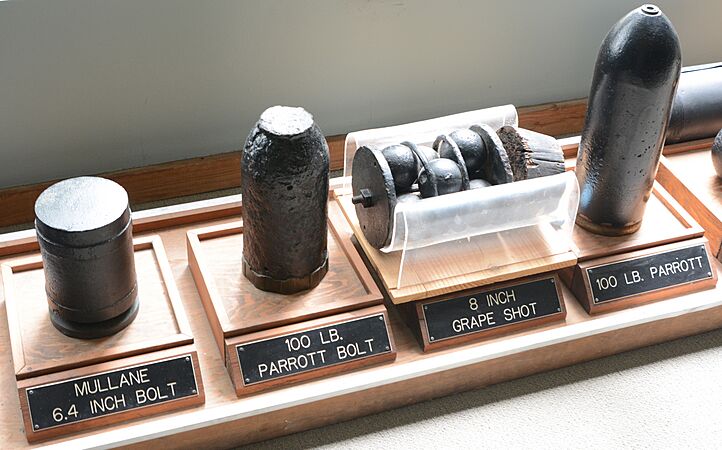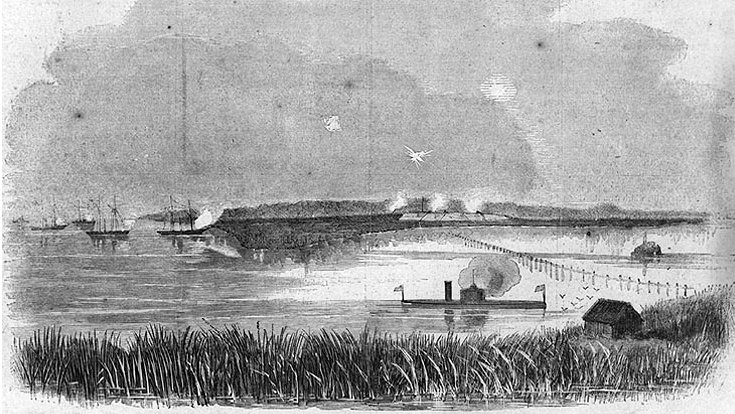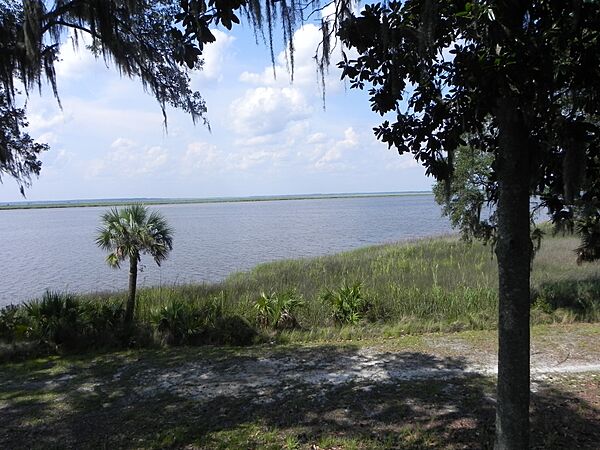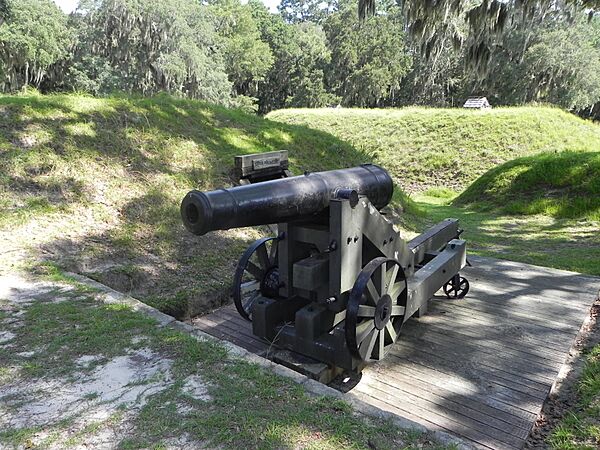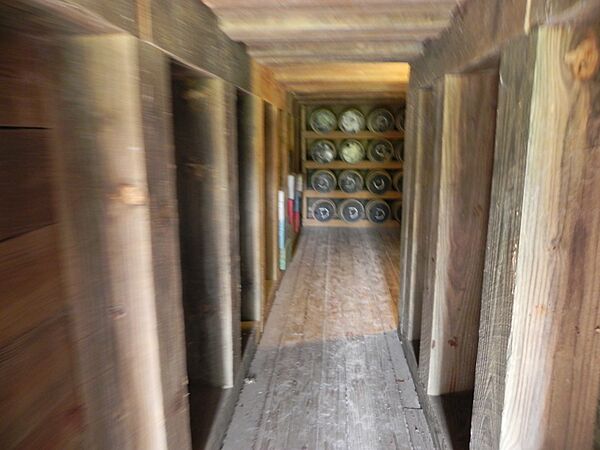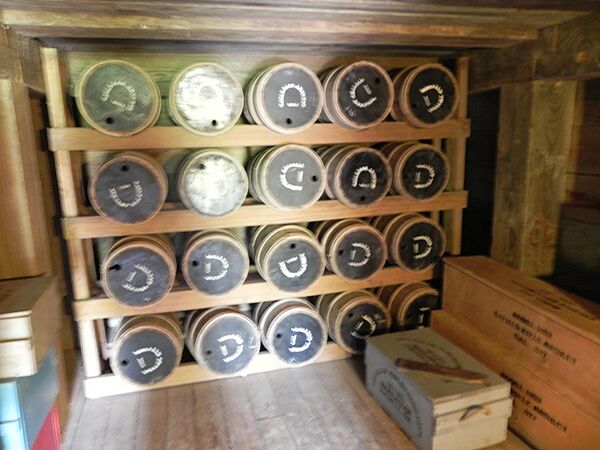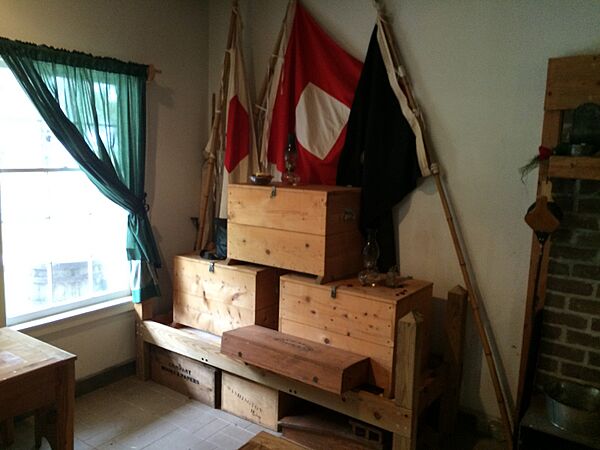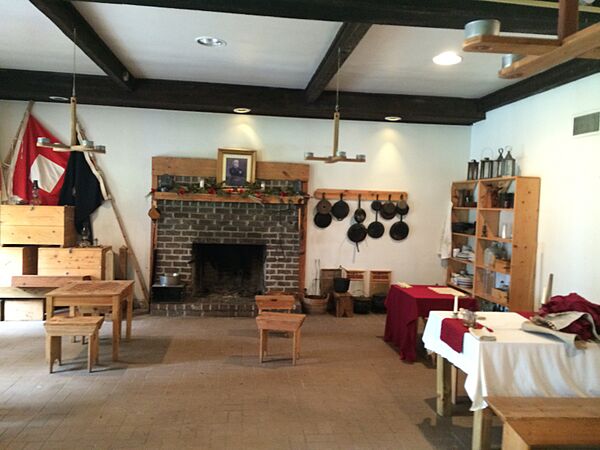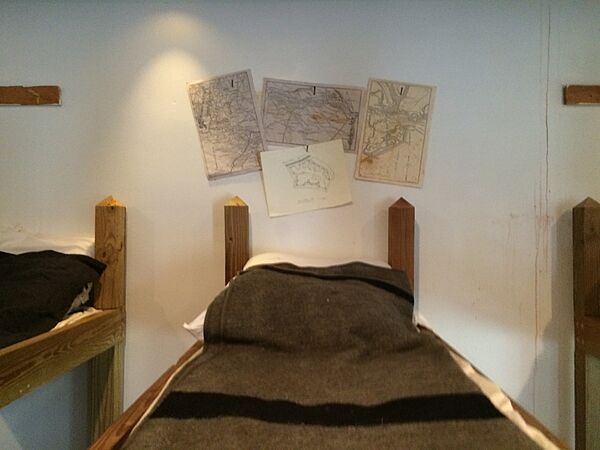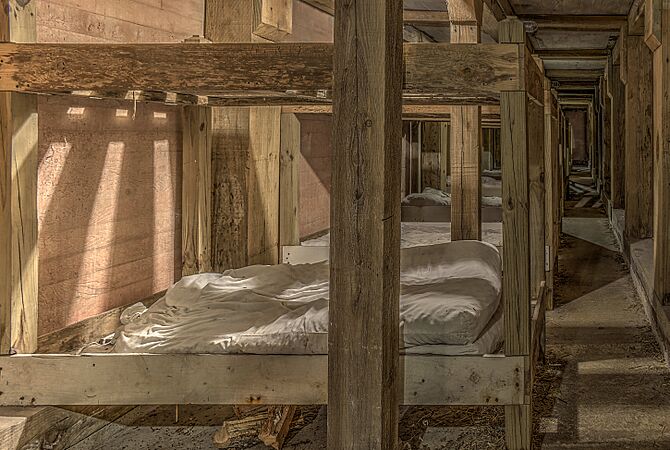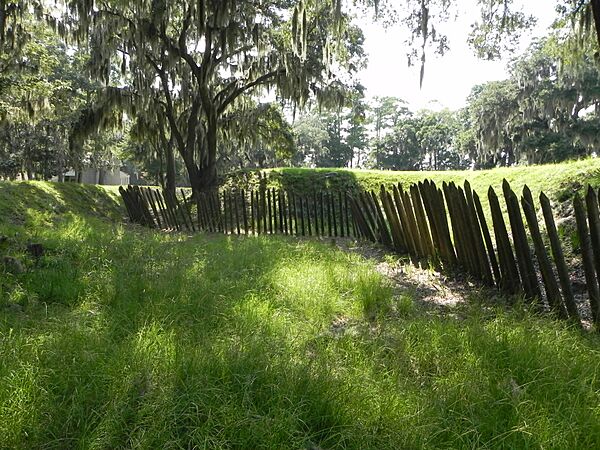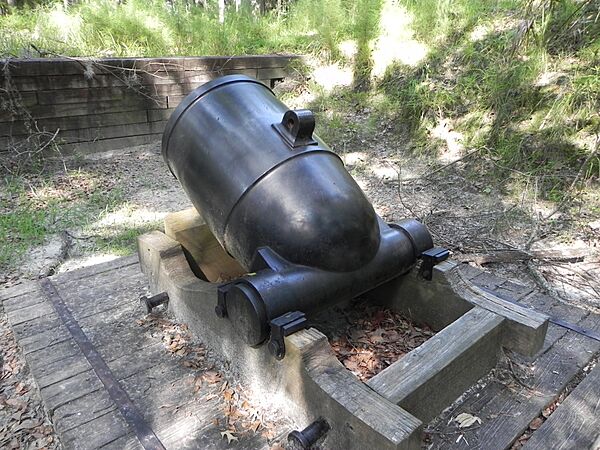Fort McAllister facts for kids
Quick facts for kids |
|
|
Fort McAllister
|
|
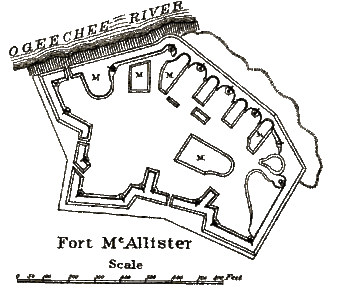
Plan of the fort
|
|
| Location | Near Midway, Georgia |
|---|---|
| Nearest city | Richmond Hill, Georgia |
| Area | 30 acres (12 ha) |
| Built | 1861 |
| Architect | Capt. John McCrady |
| NRHP reference No. | 70000197 |
| Added to NRHP | May 13, 1970 |
Fort McAllister was a strong fort built by the Confederates during the American Civil War. It was made mostly of earth and dirt. Its main job was to protect the important city of Savannah, Georgia.
This fort was the southernmost of the forts guarding Savannah. It saw more battles than the other forts. You can find it on the Ogeechee River in Bryan County. Today, it's listed on the National Register of Historic Places. Fort McAllister was one of three forts protecting Savannah. The others were Fort Pulaski and Fort James Jackson. These forts stood against the Union navy's efforts to block trade. The coast of the southeastern United States was a testing ground. Both sides tried out new naval weapons and defenses there. Fort McAllister was very important. Taking it meant opening the way to Savannah. Savannah was a key Confederate port on the Atlantic Ocean.
Contents
History of Fort McAllister
Captain John McCrady designed Fort McAllister. In 1861, General Robert E. Lee visited the fort. He suggested making it even stronger. Captain McCrady followed his advice. The fort's earthen walls became very tough. They could handle many cannon attacks.
The fort had seven places for cannons. In the middle, there was a safe area called a "bombproof." This area held a hospital and supplies. It also had barracks for soldiers and officers' rooms. Gunpowder and extra guns were stored there too. A very large 10-inch mortar was kept outside. This was so its powerful blast wouldn't shake the fort's walls apart.
Battles and Attacks
Over the next two years, ships attacked the fort seven times. But the fort held strong each time. It only got a little damaged. Few soldiers were hurt. There were four naval attacks in 1862.
In 1863, Union ironclad ships began attacking. These were powerful ships covered in metal armor. The Montauk attacked first on January 27, 1863. Later, the Passaic, Nahant, and Patapsco joined in. The Montauk had huge cannons. One was 11 inches, and another was 15 inches. These were the biggest cannons used in the war.
The Montauk fired at the fort for five hours. But it caused no deaths and little damage. The earth walls simply absorbed the cannonballs. Any damage was easy to fix. The fort's cannons hit the ironclad 15 times. But they didn't cause much harm to the armored ship. The Montauk tried again on February 1. This attack also failed. However, the fort's commander, Major John B. Gallie, was killed. Another attack on March 3 lasted seven hours. It also failed to damage the fort.
The fort was also near where the CSS Nashville ship sank. This happened on February 28, 1863.
Sherman's March and the Fort's Fall
On December 13, 1864, General William T. Sherman reached the fort. He was on his famous Sherman's March to the Sea. General William B. Hazen's soldiers attacked the fort. Major George Wayne Anderson and about 230 Confederate troops defended it.
The Union soldiers quickly overwhelmed the fort's defenders. The battle lasted only about 15 minutes. Fort McAllister was the last defense for Savannah. After it fell, General William J. Hardee pulled his 10,000 troops out of Savannah. This meant Sherman captured the city without a fight. Sherman's army then left the fort. They burned its bunkers and other buildings.
That evening, Major Anderson was held at the McAllister family home. This was now General Hazen's headquarters. General Hazen and Lieutenant Colonel Strong invited General Sherman to dinner. They wanted to celebrate their victory. In a kind move, General Hazen also invited Major Anderson to join them. General Sherman agreed.
The dinner conversation was surely lively. Major Anderson and General Sherman had a strong discussion. They talked about how the fort was defended. They also spoke about the bravery of all the soldiers. Cigars were shared, and tributes were made to those who had died. However, Sherman was still upset. He didn't like that Anderson had used land mines to defend the fort. So, he ordered Major Anderson to help clear the mines with the other captured Confederates.
After the Civil War
In the late 1930s, Henry Ford bought the land where the fort stood. He started to restore it. Later, the International Paper Company bought the property from Ford's family. In 1958, they gave it to the State of Georgia.
The Georgia Historical Commission continued the restoration work. They wanted the fort to look like it did in 1863-64. The museum at the site shows many old items found there. The fort was added to the National Register of Historic Places in 1970. The fort's site was later combined with the nearby Richmond Hill State Park. This created the Fort McAllister State Historic Park.
Images for kids
-
Hot Shot furnace


